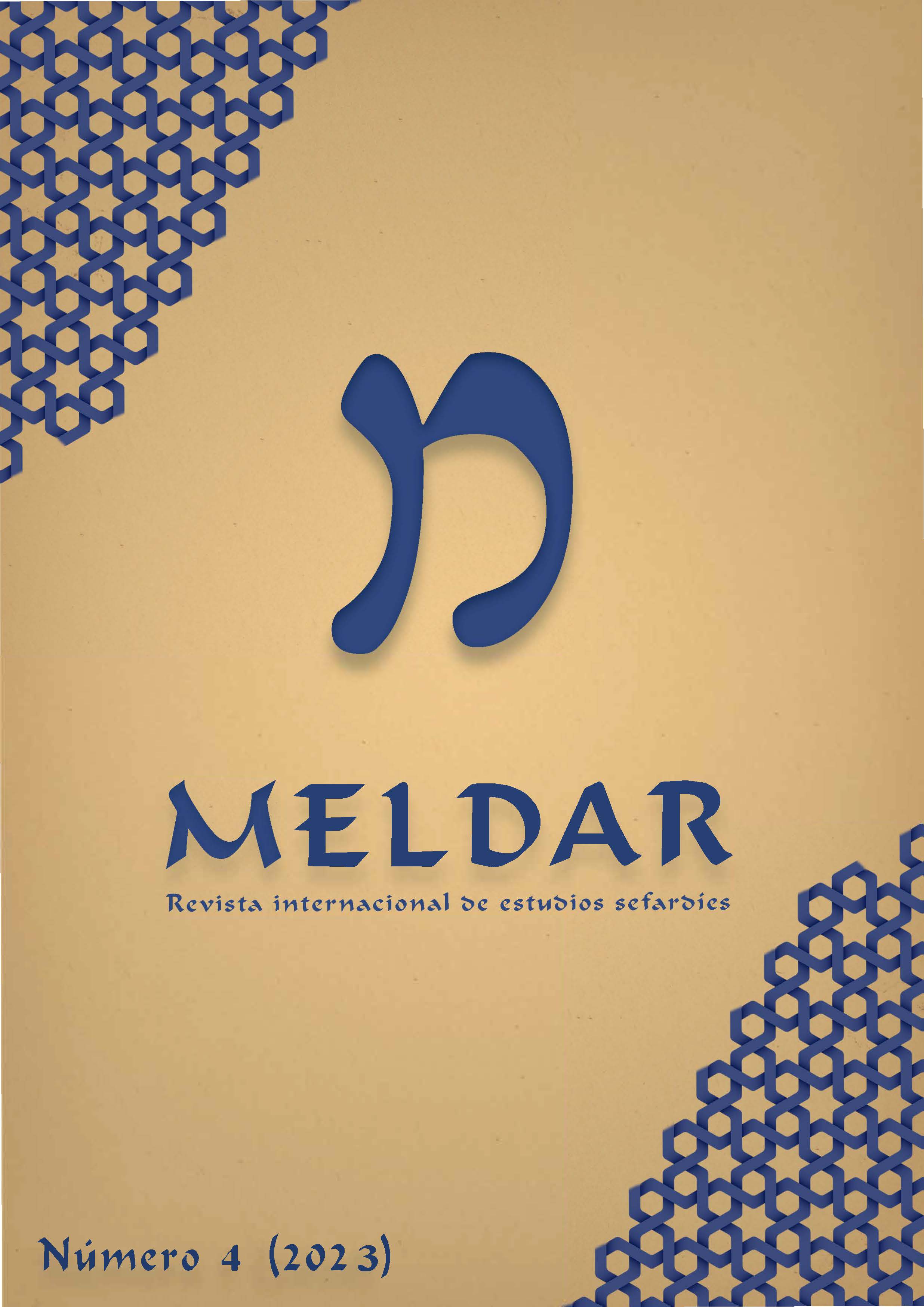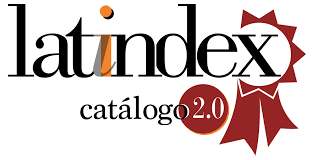Desafíos y necesidades en la enseñanza del ladino entre diez activistas de la revitalización de la lengua
DOI:
https://doi.org/10.46661/meldar.8525Palabras clave:
Ladino, judeoespañol, revitalización lingüística, enseñanza de lenguas, estudios sefardíes, lenguas judíasResumen
Este artículo presenta los resultados de entrevistas con diez profesores comprometidos con la revitalización del ladino (judeoespañol). El propósito del estudio es recopilar las experiencias de docentes de ladino para comprender los desafíos que enfrentan y las necesidades que expresan para continuar con sus actividades.
Los desafíos estaban relacionados con el perfil lingüístico de los estudiantes, con la confianza de los estudiantes y de los profesores para expresarse en ladino y con opiniones normativas sobre la lengua. Los maestros expresaron necesidades relacionadas con la búsqueda de puestos docentes estables, con la creación de una prueba y un certificado de dominio del ladino, con el desarrollo de recursos para la enseñanza del idioma y con la actualización del vocabulario del ladino para reflejar la vida contemporánea. Se consideró importante crear espacios para que los estudiantes puedan practicar la lengua y oportunidades para que los docentes se puedan reunir y discutir cuestiones didácticas.
Los puntos de vista de los docentes diferían considerablemente en cuanto a normas lingüísticas, y la deseabilidad de un certificado oficial de dominio del idioma. Los resultados apuntan a la necesidad de más discusiones y de iniciativas de perfeccionamiento pedagógico.
Descargas
Citas
Álvarez López, Cristóbal José. (2017). Estudio lingüístico del judeoespañol en la revista “Aki Yerushalayim” [Doctoral dissertation, University of Seville, Spain]. Retrieved from https://idus.us.es/bitstream/handle/11441/68487/Cristóbal%20José%20Álvarez%20López%20-%20Tesis%20doctoral.pdf
August-Zarębska, Agnieszka. (2020). The Language of Sephardic Jews: History and Main Characteristics. In Jolanta Sujecka (ed.), The Balkan Jews and the Minority Issue in South-Eastern Europe (pp. 181–203). Warsaw Bellerive-sur-Allier: Faculty of ‘Artes Liberales’ University of Warsaw, Wydawnictwo DiG and Edition La Rama.
Benbassa, Esther and Rodrigue, Aron. (2000). Sephardi Jewry: A History of the Judeo-Spanish Community, 14th–20th Centuries. Berkeley/Los Angeles/London: University of California Press.
Benor, Sarah Bunin. (2008). Towards a New Understanding of Jewish Language in the Twenty-First Century. Religion Compass, 2(6), 1062–1080. https://doi.org/10.1111/j.1749-8171.2008.00108.x
Braun, Virginia and Clarke, Victoria. (2006). Using thematic analysis in psychology. Qualitative Research in Psychology, 3(2), 77–101. https://doi.org/10.1191/1478088706qp063oa
Brink-Danan, Marcy. (2010). The meaning of Ladino: The semiotics of an online speech community. Language & Communication, 31(2), 107–118. https://doi.org/10.1016/j.langcom.2010.08.003
Bryman, Alan. (2016). Social research methods (Fifth Edition). Oxford/New York: Oxford University Press.
Bunis, David M. (2018). Judezmo (Ladino/Judeo-Spanish): A Historical and Sociolinguistic Portrait. In Benjamin Hary and Sarah Bunin Benor (eds.), Languages in Jewish communities, past and present (pp. 185–238). Berlin: De Gruyter. https://doi.org/10.1515/9781501504631-008
Bunis, David M. (2019). La ortografia de Aki Yerushalayim: Un pinakolo en la estoria de la romanizasión del djuḏezmo (djudeo-espanyol). Aki Yerushalayim. Revista Kulturala Djudeo-Espanyola, 40(101), 8–24. Retrieved from https://yerushalayimaki.wixsite.com/ladino/aki-yerushalayim-no-99-100
Bürki, Yvette. (2010). The Ottoman press at the dawn of the twentieth century through the Salonica newspapers “La Época” and “El Avenir”. European Judaism: A Journal for the New Europe, 43(2), 102–116. https://doi.org/10.3167/ej.2010.430210
Cruz Çilli, Kenan. (2021). ‘Ladino’s Renaissance’: For This Dying Jewish Language, COVID Has Been an Unlikely Lifesaver. Haaretz. Retrieved from https://www.haaretz.com/middle-east-news/2021-01-05/ty-article-opinion/.premium/ladinos-renaissance-covid-the-unlikely-lifesaver-for-a-dying-language/0000017f-f461-d47e-a37f-fd7df1120000
De Tolédo, Alain, de Tolédo, Nora and Saporta, Daisy. (2021). El Nehama al reverso – Vocabulaire français/judéo-espagnol. Paris: Muestros Dezaparesidos.
Dołowy-Rybińska, Nicole and Hornsby, Michael. (2021). Attitudes and Ideologies in Language Revitalisation. In Justyna Olko & Julia Sallabank (eds.), Revitalizing Endangered Languages: A Practical Guide (pp. 104–126). Cambridge: Cambridge University Press. https://doi.org/10.1017/9781108641142
Ethnologue. (2023). Ladino. Ethnologue. Retrieved from https://www.ethnologue.com/language/lad
FitzMorris, Mary K. (2014). The Last Generation of Native Ladino Speakers? Judeo-Spanish and the Sephardic Community in Seattle [Master of Arts, University of Washington]. Retrieved from https://digital.lib.washington.edu/researchworks/bitstream/handle/1773/26221/FitzMorris_washington_0250O_13456.pdf?sequence=1&isAllowed=y
Gerson Şarhon, Karen. (2011). Ladino in Turkey: The situation today as reflected by the Ladino database project. European Judaism, 44(1), 62–71. https://doi.org/10.3167/ej.2011.44.01.08
Grafía del djudeo-espanyol sigún el metodo de Akí Yerushaláyim. (2023). Aki Yerushalayim, 44(109), 111–114. Retrieved from https://25637f6e-7c1f-4643-b151-9b5ce9be74b2.filesusr.com/ugd/e6c4a6_e6a2b03358e043bf8841fc1864b39ae2.pdf
Grenoble, Lenore A. (2021). Why Revitalize? In Justyna Olko and Julia Sallabank (eds.), Revitalizing Endangered Languages: A Practical Guide (pp. 9–32). Cambridge: Cambridge University Press. https://doi.org/10.1017/9781108641142
Harris, Tracy K. (1994). Death of a language: The history of Judeo-Spanish. Newark: University of Delaware Press.
Harris, Tracy K. (2011). The state of Ladino today. European Judaism, 44(1), 51–61. https://doi.org/10.3167/ej.2011.44.01.07
Helander, Hanna, Keskitalo, Pigga and Turunen, Tuija. (2023). Saami Language Online Education Outside the Saami Homeland—New Pathways to Social Justice. In Martin Thrupp, Piia Seppänen, Jaakko Kauko and Sonja Kosunen (eds.), Finland’s Famous Education System (pp. 303–318). Singapore: Springer. https://doi.org/10.1007/978-981-19-8241-5_19
Held, Michal. (2010). The People Who Almost Forgot: Judeo-Spanish Web-Based Interactions as a Digital Home-Land. El Prezente, 4, 83–101.
Hinton, Leanne. (2001). The master-apprentice language learning program. In Leanne Hinton and Ken Hale (eds.), The green book of language revitalization in practice (pp. 217–226). San Diego: Academic Press. https://doi.org/10.1016/B978-012349353-8/50026-1
Hinton, Leanne. (2010). Language Revitalization in North America and the New Direction of Linguistics. Transforming Anthropology, 18(1), 35–41. https://doi.org/10.1111/j.1548-7466.2010.01068.x
Hodges, Rhian. (2021). Defiance within the decline? Revisiting new Welsh speakers’ language journeys. Journal of Multilingual and Multicultural Development, 1–17. https://doi.org/10.1080/01434632.2021.1880416
Kirschen, Bryan. (2019). Language ideology and practice among Judeo-Spanish-speaking Sephardim in Seattle and South Florida. Language & Communication, 69, 84–96. https://doi.org/10.1016/j.langcom.2019.08.002
Koén-Sarano, Matilda. (2001). Ensenyando el Djudeo-Espanyol (Ladino) en la Universidad Ben-Gurion. Shofar, 19(4), 53–57. https://doi.org/10.1353/sho.2001.0111
Kohen, Elli and Kohen-Gordon, Dahlia. (2000). Ladino-English/English-Ladino Concise Encyclopedic Dictionary (Judeo-Spanish). New York: Hippocrene Books.
Ladino21. (2022, June 3). Beni Aguado: Los Aksentos i el Solitreo // Nu York, Estados Unidos. YouTube. Retrieved from https://www.youtube.com/watch?v=NRWsJXgiwyo
Mazower, Mark. (2006). Salonica, City of Ghosts. Christians, Muslims and Jews, 1430–1950. New York: Vintage Books.
Morgan, Gerald. (2013). Welsh: A European Case of Language Maintenance. In Leanne Hinton and Ken Hale (eds.), The Green Book of Language Revitalization in Practice (pp. 107–113). Leiden/Boston: Brill. https://doi.org/10.1016/B978-012349353-8/50015-7
Moseley, Christopher (ed.). (2010). Atlas of the World’s Languages in danger (3rd edition). Paris: UNESCO Publishing. Retrieved from http://www.unesco.org/culture/languages-atlas/en/atlasmap.html
Naar, Devin E. (2016). Jewish Salonica: Between the Ottoman Empire and Modern Greece. Stanford, California: Stanford University Press.
Nehama, Jospeh. (2003). Dictionnaire du judéo-espagnol. Paris: La Lettre Sépharade.
Olko, Justyna and Sallabank, Julia (eds.). (2021). Revitalizing Endangered Languages: A Practical Guide. Cambridge: Cambridge University Press. https://doi.org/10.1017/9781108641142
Perahya, Klara and Perahya, Elie. (1998). Dictionnaire Français-Judéo-Espagnol. Paris: L’Asiathèque.
Perahya, Klara. (2012). Diksyonaryo Judeo-Espanyol-Turko/Ladino-Türkçe Sözlük (K. Gerson Şarhon, ed.). Istanbul: Ottoman-Turkish Sephardic Culture Research Center; Gözlem Gazetecilik.
Pine, Aidan and Turin, Mark. (2017). Language Revitalization. In Oxford research encyclopedia of linguistics. Oxford: Oxford University Press. https://doi.org/10.1093/acrefore/9780199384655.013.8
Refael, Shmuel. (2001). Current Methods and Methodology in Ladino Teaching. Shofar, 19(4), 85–95. https://doi.org/10.1353/sho.2001.0118
Russell, Victoria. (2020). Language anxiety and the online learner. Foreign Language Annals, 53, 338–352. https://doi.org/10.1111/flan.12461
Santa Puche, Salvador. (2001). Forging the Didactics of Sefardic Language and Literature. Shofar, 19(4), 71–76. https://doi.org/10.1353/sho.2001.0117
Sapir, Yair. (2017). The Revitalization of Elfdalian. 50–57. https://www.diva-portal.org/smash/get/diva2:1211694/FULLTEXT01.pdf
Sevi, Aldo. (2023, June). Letra del redaktor. Aki Yerushalayim. Revista Kulturala Djudeo-Espanyola, 44(109), 4–6. Retrieved from https://online.fliphtml5.com/pqzor/disb/?fbclid=IwAR3AGcIYFoZd9gcGO1u5Hy9zPqlL-tiSsZWrdOT57OtdGyTDIm_DTfU441Y#p=4
Spolsky, Bernard, and Shohamy, Elana G. (1999). The Languages of Israel: Policy, Ideology and Practice. Clevedon: Multilingual Matters.
Toyama, Michiko and Yamazaki, Yoshitaka. (2021). Classroom Interventions and Foreign Language Anxiety: A Systematic Review with Narrative Approach. Frontiers in Psychology, 12(614184). https://doi.org/10.3389/fpsyg.2021.614184
Varol, Marie-Christine. (2002). Normalisation orthographique du judéo-espagnol. In Dominique Caubet, Salem Chaker and Jean Sibille (eds.), Codification des langues de France (pp. 383–404). Paris: L’Harmattan. Retrieved from https://inalco.hal.science/hal-02139813/document
Warschauer, Mark, Donaghy, Keola and Kuamo’o, Hale. (1997). Leoki: A powerful voice of Hawaiian language revitalization. Computer Assisted Language Learning, 10(4), 349–361. https://doi.org/10.1080/0958822970100405
Wilson, William H. and Kamanā, Kauanoe. (2013). “Mai Loko Mai o Ka ’I’ini: Proceeding from a Dream” The ’Aha Pūnana Leo Connection in Hawaiian Language Revitalization. In Leanne Hinton and Ken Hale (eds.), The Green Book of Language Revitalization in Practice (pp. 147–177). Academic Press. https://doi.org/10.1016/B978-012349353-8/50020-0
Woolard, Kathryn A. (1998). Introduction: Language ideology as a field of inquiry. In Bambi B. Schieffelin, Kathryn A. Woolard and Paul V. Kroskrity (eds.), Language Ideologies: Practice and Theory (pp. 3–47). Oxford: Oxford University Press. https://doi.org/10.1093/oso/9780195105612.003.0001
Yebra López, Carlos. (2021). The Digital (De)territorialization of Ladino in the Twenty-First Century. WORD, 67(1), 94–116. https://doi.org/10.1080/00437956.2021.1880065
Zuckermann, Ghil’ad. (2020). Revivalistics: From the Genesis of Israeli to Language Reclamation in Australia and Beyond. New York: Oxford University Press. https://doi.org/10.1093/oso/9780199812776.001.0001
Zuckermann, Ghil’ad. (2021). Revivalistics is Not Documentary Linguistics. Sustainable Multilingualism, 18(1), 1–13. https://doi.org/10.2478/sm-2021-0001
Descargas
Publicado
Cómo citar
Número
Sección
Licencia
Derechos de autor 2023 Meldar: Revista internacional de estudios sefardíes

Esta obra está bajo una licencia internacional Creative Commons Atribución-NoComercial 4.0.
Las obras se publican en la edición electrónica de la revista bajo una licencia Creative Commons Reconocimiento-NoComercial-4.0 Internacional: se pueden copiar, usar, difundir, transmitir y exponer públicamente, siempre que:
- Se cite la autoría y la fuente original de su publicación (revista, editorial y URL de la obra).
- No se usen para fines comerciales.
- Se mencione la existencia y especificaciones de esta licencia de uso.




 @meldar__
@meldar__


